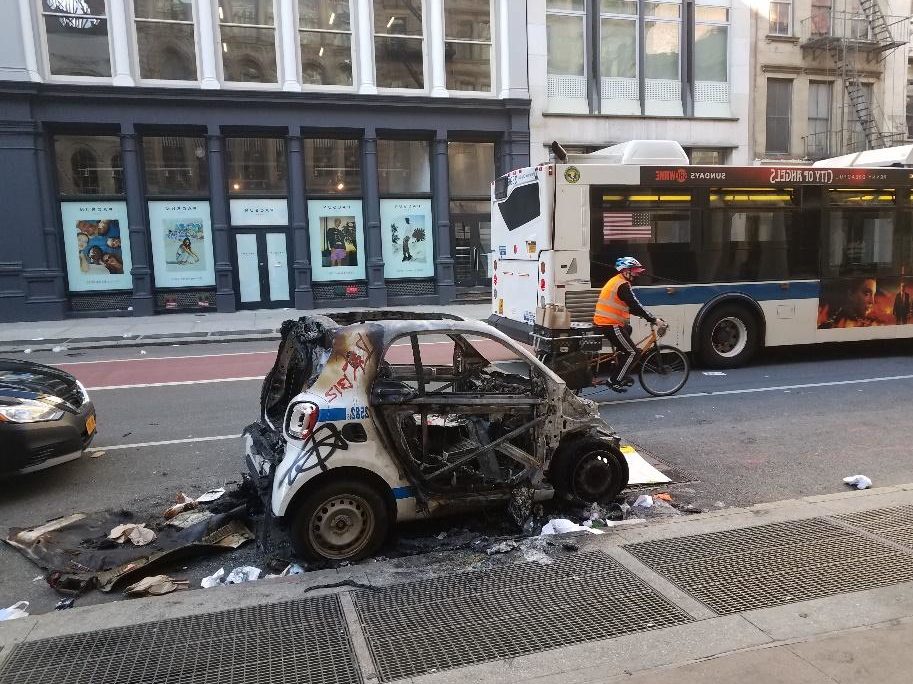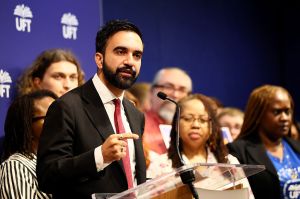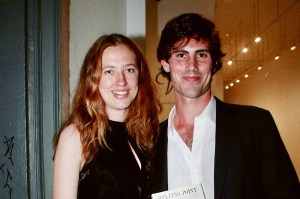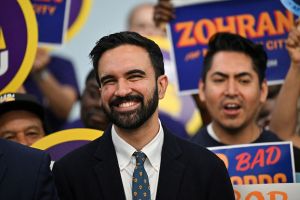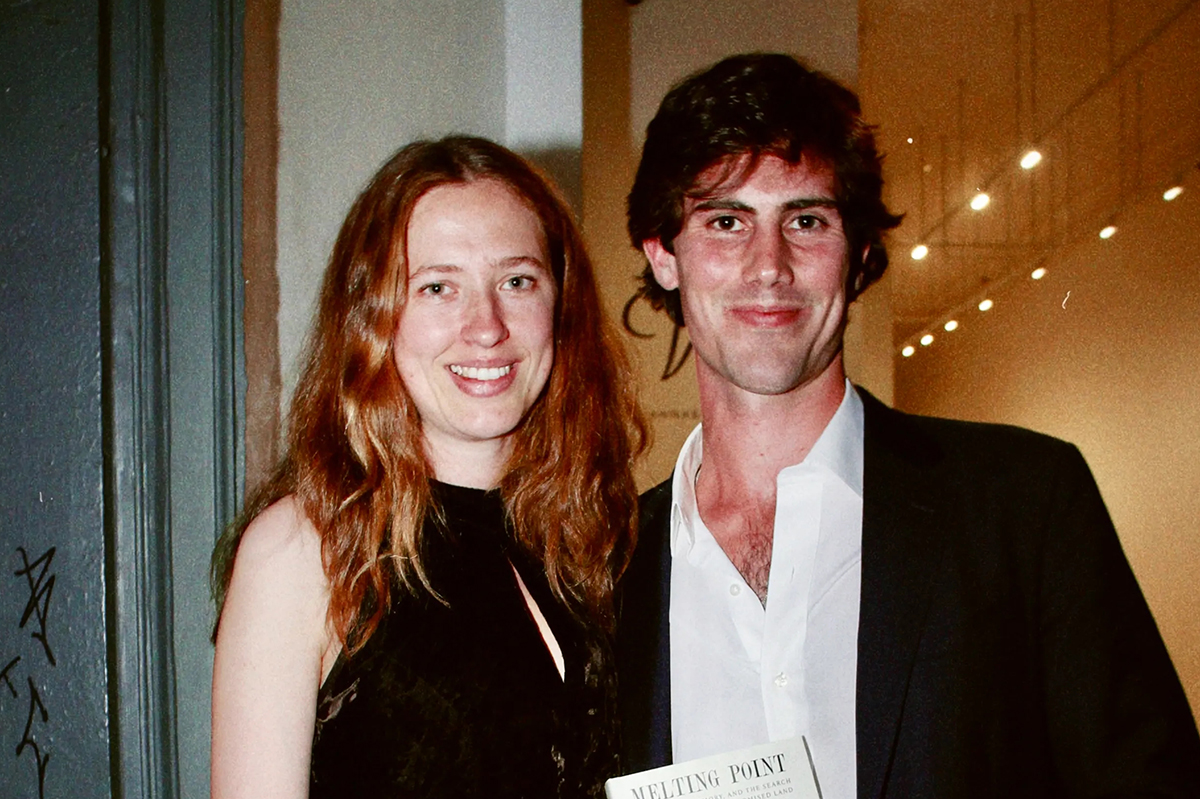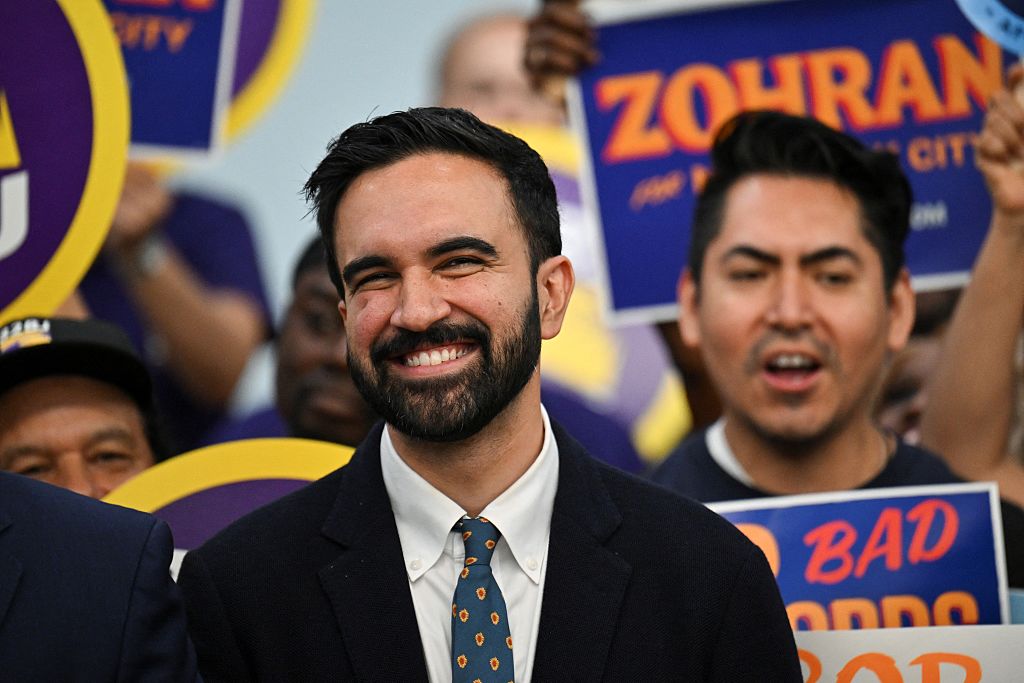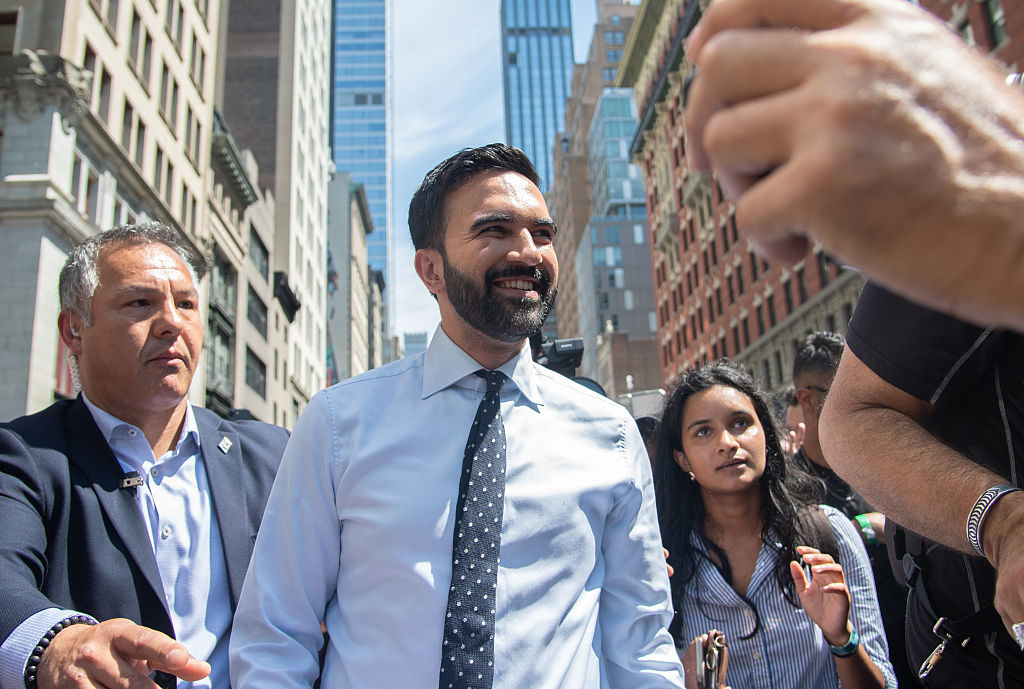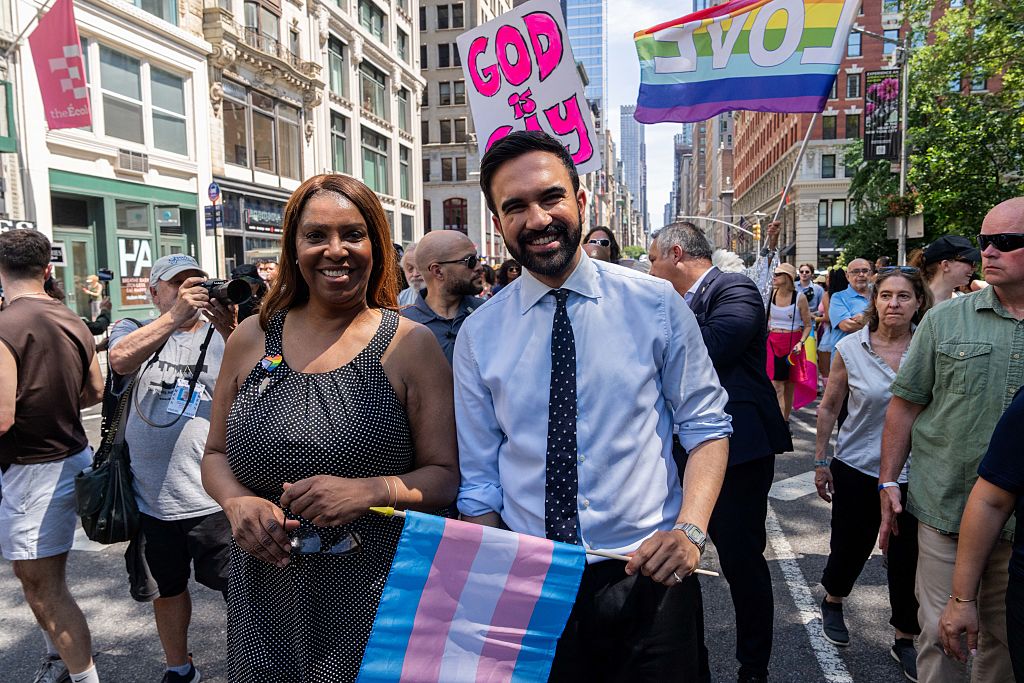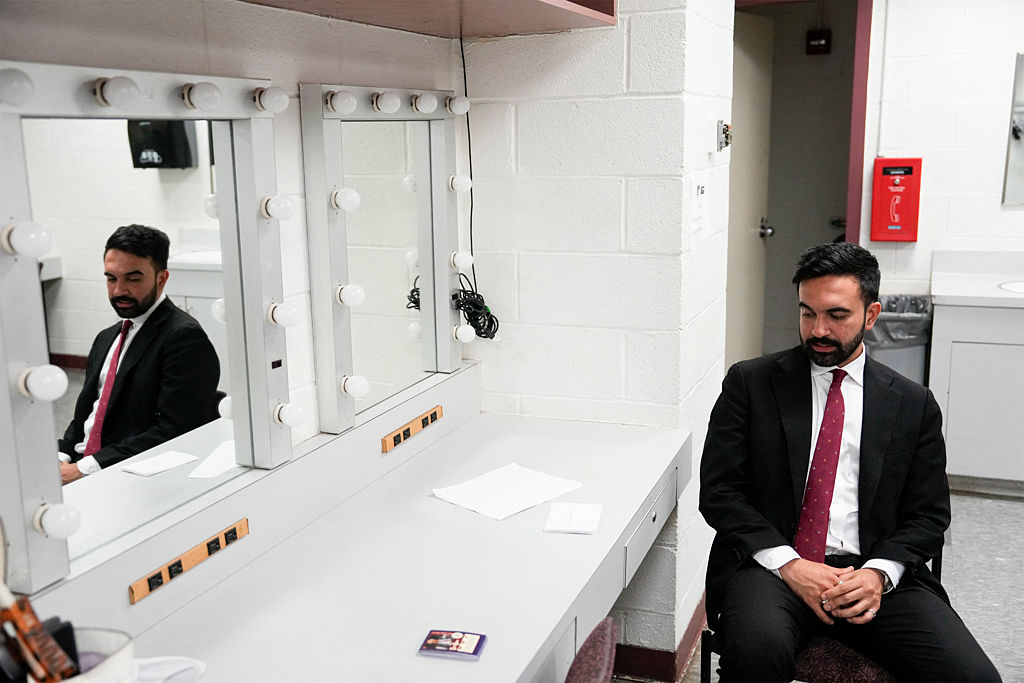Update June 2, 2020: There’s something very wrong with our cities, as the devastating riots this week show. Last year, in the the Spectator’s Christmas US edition, I wrote about how in a few short years the liberal city rapidly became the progressive city under an organized insurgency of far-left activists embedding themselves in municipal governments. The results have been devastating, as our once beautiful cities marinate in dirt, disease and strife. Now, they are burning. Failed progressive policies have never been more evident than they are today. With the election five months away, Trump now has an opportunity to pitch himself as the leader who will fight against the degradation of the inner cities. This could not only increase his appeal among suburban and rural voters who are disgusted by the scenes across urban America this week. It also gives him a chance to appeal to law-abiding citizens in the inner cities, who are now suffering as the rioters wreak havoc on their street.
In 2014, America’s progressives got a wake-up call. That year, the midterm elections returned the largest Republican majority to the House of Representatives since 1928. President Barack Obama had, by the middle of his second term, proved an ineffective or unwilling conduit for the radical transformation they’d been promised. The hope and change president, whose rhetoric breathed life into the decaying Marxism in America’s cultural institutions, had been a failure. With a new Republican Congress, any last hopes that Obama would accomplish anything significant were dashed.
In the brownstone-lined streets of Park Slope, Brooklyn, however, the progressive flame burned on. Brad Lander, the New York City councilman who succeeded Bill de Blasio to represent Park Slope, had long before realized that Democratic domination in Washington would never lead to radical transformation. On the federal level, there would always be pushback from moderates and red America. So, in 2012, he began mobilizing progressive city leaders across the country to explore what might be accomplished at the local level.
That year Local Progress was born, a national network of far-left activists that today operates in hundreds of locations in 46 states under the umbrella of the Center for Popular Democracy. It has been a model for dozens of similar groups with shadowy funding protected by the rules of a 501(c)(4) nonprofit. Its mission is to scout, fund and insert progressive activists into municipal governments, and it is very good at it.
Lander, the founder of the New York City Council Progressive Caucus, is chairman of the Local Progress board. He understood that municipal elections are won by well-mobilized activists because voter turnout tends to be so low. In 2017, his friend de Blasio was re-elected with the support of just 8.5 percent of New Yorkers. The results of 2019’s special election for Public Advocate, the position that launched de Blasio into the mayorship and Letitia James into the office of New York State attorney general, were even more pathetic. Far-left progressive Jumaane Williams won with the support of just 1.5 percent of New Yorkers.
‘You’re building a team of people that share goals and values,’ Lander told the New York Times in 2014. ‘You want to be collaborative and inclusive and democratic, but in good organizing, people also want to win. They want to achieve a concrete and specific change that requires smart strategy and the ability to move quickly at the right moment.’
The result has been a shift of power into the hands of city leaders who behave more like aloof 17th-century monarchs or smarmy jetsetting televangelists than the 21st-century CEOs their cities desperately need. In a few short years, this new class of leadership has wreaked immense havoc. The gap between the priorities of municipal chiefs and the people they represent couldn’t be starker. The consequence is that America’s once-great cities are dying, their alabaster gleam replaced by a Third World patina.
April 22, 2019: hours before he announced New York’s Green New Deal, which, among many things, makes skyscrapers illegal, Mayor Bill de Blasio did what he does nearly every morning: he took a gas-guzzling motorcade 11 miles to the gym. Later, at the press conference, looking the part of Daenerys, Breaker of Chains, de Blasio stood behind a podium surrounded by a handpicked scrum of young, hip people of color. There was a Hispanic woman with magenta hair, a black lady with a blond afro and hoop earrings, and a young man in a camo- pattern bucket hat. De Blasio appears to want one thing more than anything else in life: for black people to think he’s cool.
The Green New Deal was de Blasio’s farewell to the crumbling city that hates him. With homelessness and the cost of living soaring, New York is hemorrhaging businesses and residents. The city has a net loss of about 30,000 people a year. De Blasio decided to follow the trend and get out of town. He announced a bid for the White House, flipped the bird to the Big Apple and handed the keys to his fiefdom over to the nation’s most progressive city council. The presidential run was an instant dud, however, and now de Blasio is back in the mayor’s office. New Yorkers have barely noticed.
On the opposite coast, in October 2018, a local NBC News team confronted Los Angeles mayor Eric Garcetti with photographs of a mountain of garbage one city block long on Ceres Avenue in downtown LA. ‘I’m disgusted by it personally,’ the mayor shrugged. He did nothing. When the report made national headlines, sanitation crews finally arrived. Six months later, though, the heap was back and bigger than ever.
NBC broadcast a follow-up report. The networks beamed out footage of reporters wading through effluent in the streets of the central business district; Garcetti was 2,500 miles away in Washington, DC addressing the Center for American Progress Ideas Conference. On stage, he blasted President Trump for abandoning his ‘duty to the country’. ‘He walked away from this country’s crumbling communities, and he walked away from the American people,’ Garcetti said to the crowd, without a hint of guilt.
Garcetti prefers planes to walking. He spends about a third of his time outside California. That’s understandable: his city is on the verge of an epidemic. Los Angeles has the nation’s largest outdoor homeless population, nearly 60,000 addicted and mentally ill people. Medieval diseases are ravaging the sprawling tent cities that have engulfed the city and are spreading into the general population. Cops are coming down with typhoid fever and City Hall workers have contracted typhus. Rats outnumber humans four to one in Los Angeles. The city does not have a rodent abatement program and environmental activists are working to outlaw rodenticides over concerns they could hurt local mountain lions. Doctors say a plague outbreak is inevitable. That’s right, plague, as in the Black Death.
Mayors weren’t always so mobile. There was a time, not so long ago, when mayors embedded themselves in the municipality. Whether they were Democrat or Republican seemed irrelevant to the highly localized issues of a city.
But the progressive insurgency into big city government has birthed a kind of shadow nation, an interconnected confederacy that largely bypasses the Democratic party and is uninterested in what happens in Washington. These mayors don’t care about the quality of life in their cities. Their vision is national and global, as are their policies: plastic-bag bans and $15 minimum wage proposals float from one city to the next.
The left is always more bothered by distant injustice than messy local concerns. As 46-year-old Seattle city councilwoman Kshama Sawant told The Nation: ‘As socialists, we are also internationalists. To the core, it’s a recognition that capitalism is a global system. That’s why our links are not with Americans who are our bosses, but working people in India or Mexico or Brazil.’
Progressive local leaders busy themselves with PC abstractions as their cities fall apart. As San Francisco drowns in human feces, city government pushes through a law to change the term ‘convicted felon’ to ‘justice-involved person’. In Seattle, a city councilman is raising alarm that the pressure washers used to clean human feces from the courthouse steps are reminiscent of water cannons deployed against Civil Rights marchers, and therefore racist. As New York’s subways transform into mobile homeless shelters, the city overhauls the network’s PA system, ordering the gender-neutral greeting ‘Hello, everyone’ to replace ‘Attention ladies and gentlemen’. Dallas law enforcement will no longer prosecute theft of ‘necessary items’, claiming it ‘criminalizes poverty’. Meanwhile, violent crime continues to explode in Chicago, St Louis and Baltimore.
Conservative media have treasured watching this collapse of the progressive experiment. But is there not a bigger opportunity for the right here? In 1968, the Republican party platform included a section called ‘Crisis of the Cities’ that called for ‘a vigorous effort, nationwide, to transform the blighted areas of cities’. In 1980, Republican candidate Ronald Reagan took a walking tour of the South Bronx. During that summer, Reagan also met with Jesse Jackson, the National Urban League and editors at black-interest magazines Ebony and Jet. It was a genuine push for urban and black votes, one that would seem unfathomable from a Republican candidate today.
In 2016, Donald Trump seemed to be leaning in the same direction. His direct push for black votes made journalists fume. ‘Look how much African-American communities have suffered under Democratic control,’ Trump said at a rally. ‘To those I say the following: what do you have to lose by trying something new like Trump? You’re living in poverty, your schools are no good, you have no jobs, 58 percent of your youth is unemployed. What the hell do you have to lose?’
For me, who mindlessly voted Democrat because that’s just what big-city dwellers do, it was one of many through-the-looking-glass moments. What has gotten better for poor blacks under 40, 50, 60 years of Democrat-machine rule in our big cities? What is this party really about, I asked myself.
In July, when President Trump tweeted about the inhumane, rodent-infested living conditions in West Baltimore, the media called his comments racist. The Democrats were forced to circle wagons and pretend Baltimore was some kind of paradise. Everybody knows different.
When cameras arrived, journalists had a hard time finding residents who would strongly condemn the president’s statements. One woman, named Michelle, appeared in two videos that went viral. ‘Trump is not racist,’ she said. ‘They don’t care about us… What [President Trump] said was definitely true. [Rep. Elijah Cummings] hasn’t done anything for us. I think he’s been in office for the last 20 years.’
Since 2016, various online activists like Candace Owens have launched a handful of campaigns geared at getting minorities to leave the Democratic party, particularly blacks. They’re cashing in and the message make conservatives feel good. Yet I suspect it’s not reaching the people it pretends to be for. Something tells me Michelle from Baltimore isn’t at home watching Turning Point USA videos on YouTube. It’s hard to think of a prominent conservative activist with as much natural urban appeal as Donald Trump himself. People have joked that he’s the first black president: with his gold toilet, private jets and hot wife, he lives the life of a rap superstar. His no-bullshit attitude and New York swagger are far more alluring to working-class urbanites, black or white, than any polished talking head on Fox News ever could be.
I’ve spent many years living in poor, mostly black areas of New York City, and my neighbors have always been more openminded about the GOP than your average conservative in Kansas might expect. They do not think you’re irredeemably evil if you’re a Republican. That’s because they don’t listen to white liberals, as no one should. Many of my neighbors today even seem, dare I say it, Trump-curious.
If there were ever a time to shake up the left’s union of socialist city-states, it is the 2020 campaign. No one should expect Los Angeles or Chicago to be painted red anytime soon. But the Democratic platform is shaping up to be so repulsive and the effects of its urban tyranny becoming so clear that the Republican party ought to make city reform central to its message next year.
GOP spokeswoman Liz Harrington says the Trump campaign is in a better position in 2020 than in 2016 to recruit unlikely Republican voters in the cities. ‘We think we can win voters anywhere, because the policies work, and we can totally point to the other side, which has run these cities for decades and their policies haven’t worked. We don’t have to go through the mainstream media anymore. They’re not going to cover the other side, but we can blast out videos on social media and talk to voters directly in their communities and show them the contrast, and it’s such a good contrast,’ she says.
‘The Democrats are in really big trouble,’ according to Harrington. ‘In 2016 they took a lot of these constituencies for granted. And if Republicans can peel off even just a fraction of a percent of some of these voting blocs that have gone 90 percent for Democrats for decades, they have a huge problem on their hands.’
Harrington says the GOP’s message to urban dwellers should focus on the economy and record-low unemployment numbers for black and Hispanic Americans and champion the Trump administration’s creation of nearly 9,000 ‘Opportunity Zones’ — economically depressed areas where investors receive tax breaks. The Republicans also, she says, might remind voters that they are the party of law and order.
‘Look at what de Blasio is doing in New York. Look what they’re doing in LA, Portland, where you just have lawlessness. You don’t want to start a business in a community where there’s high crime and you know there’s no police presence. The Democrats are refusing to enforce the law and it has a spiraling effect for every aspect of society.’
You won’t find any 2020 Democrats wading through piles of garbage in West Baltimore, or visiting the tent cities they’ve allowed to fester. They don’t care. But what if President Trump took a cue from Ronald Reagan, completely flipped the party on its head, and tried to save the cities?
This article is in The Spectator’s December 2019 US edition. Subscribe here.



